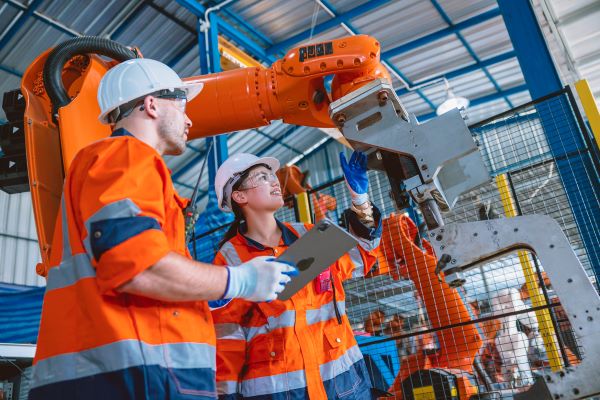I read recently that Thales plans to hire 12,000 new workers in 2023, across five countries. My first thought was that, once the recruitment has been completed, Thales will have a huge training job on its hands.
How does a company go about training such a large, diverse, and distributed cohort of newcomers? If you hope to achieve any level of consistency, there’s no way you can apply one training approach to 12,000 different people and expect equal levels of success across the board. It’s impossible.
Why? Because different people have different learning modalities.
What are learning modalities?
The term “learning modalities” refers to the different ways in which people are able to most effectively receive, process and remember new information. There are four primary learning modalities – visual, auditory, reading/writing and kinesthetic (hands-on) – but a learner could use any combination of these modalities at any given time, switching between them depending on the task at hand.
The most successful training materials include elements geared towards all four learning modalities, incorporating visual content, text, audio instructions and hands-on demonstrations.
Learning modalities in manufacturing
In the manufacturing context, training materials and work instructions are usually one-dimensional: text-heavy and “flat”. This type of content can be worryingly ineffective: studies show that only 10-20% of training information is retained long enough to transfer to the shop floor. The absence of visuals is the most critical flaw, with research suggesting that around 65% of people are primarily visual learners.
In the manufacturing context, where complicated technical tasks are routine, using visuals and animations to illustrate complex movements and processes frees up the cognitive processing power learners would use to imagine the movement themselves, leaving more bandwidth for the creation of deep memory.
In short, interactive, multi-modal training material is simply better at teaching people what they need to know, to complete a task in a safe, timely, and error-free manner.
Quality of training
The quality of training has a direct impact on worker safety, up-time and productivity, error rates and quality control. It has a direct impact on your employee’s ability to grow, progress and succeed at work, and it’s also implicated in another high-stakes variable that will be increasingly crucial to manufacturing in the years to come: employee retention.
The manufacturing industry is on track to have 2.1 million unfilled positions by 2030. This stat is often used to frame anxieties around how we’re going to find people to fill those positions amidst the sector’s unfolding skills crisis. But I think we need to be thinking even further ahead. How are we going to train the New Manufacturing Workforce, and how are we going to keep them?
Deloitte estimates that one-third of all new recruits leave within the first six months, mostly because of poor onboarding and training practices. 69% of employees are more likely to stay if they feel they’ve had a positive onboarding and training experience, and they’re also 18 times more likely to feel highly committed to their organization.
Train and retain workers
Employee retention and success starts with better training and work instruction materials. If we want employees to succeed and stay, we need to be empowering them with training materials and work instructions that accommodate the different ways in which they learn best.
Training and content departments can take the lead on this one. Developing interactive, media-rich training and work instruction materials that accommodate different learning modalities is mission-critical, because it means we can train and upskill more people, far more effectively, and it means we can set everyone up to succeed.
So ask yourself this question: how do your people learn best? Does the training content and structure work for them? Is it making them successful?



